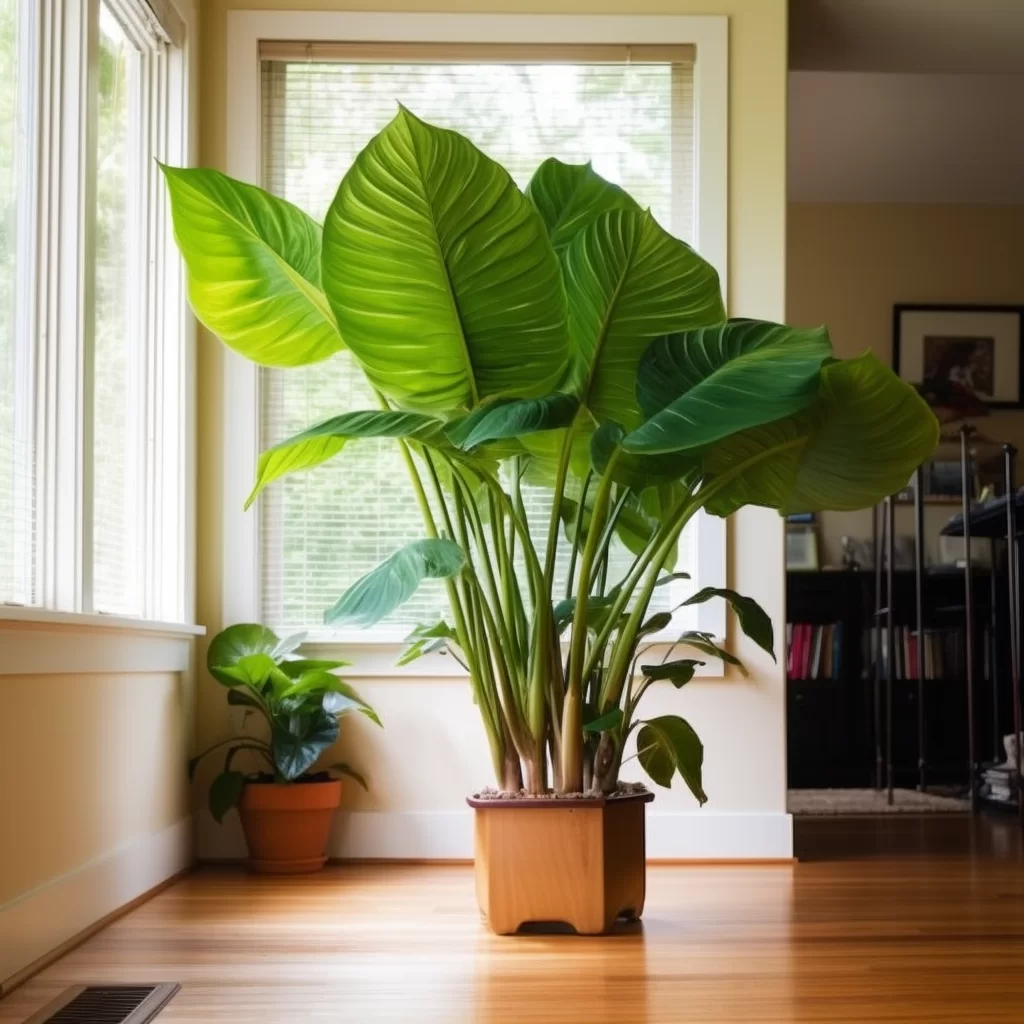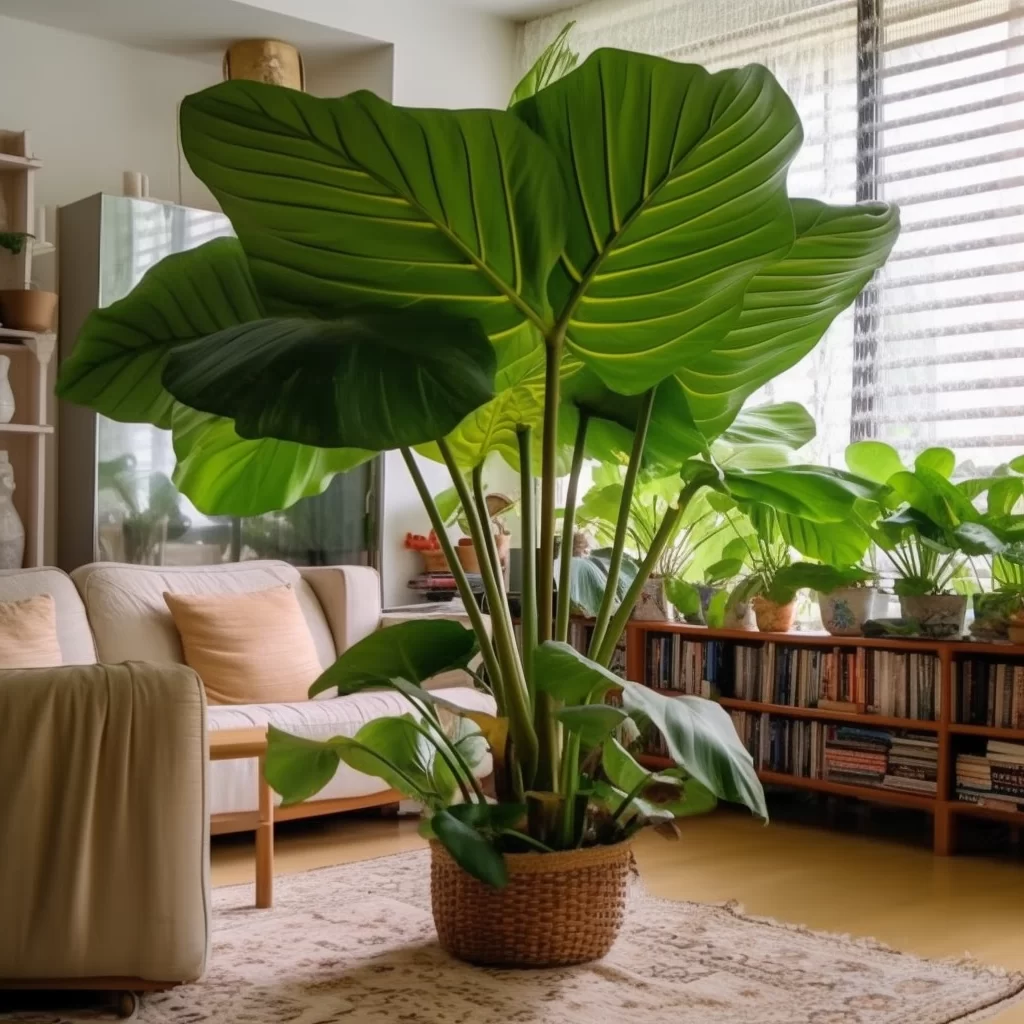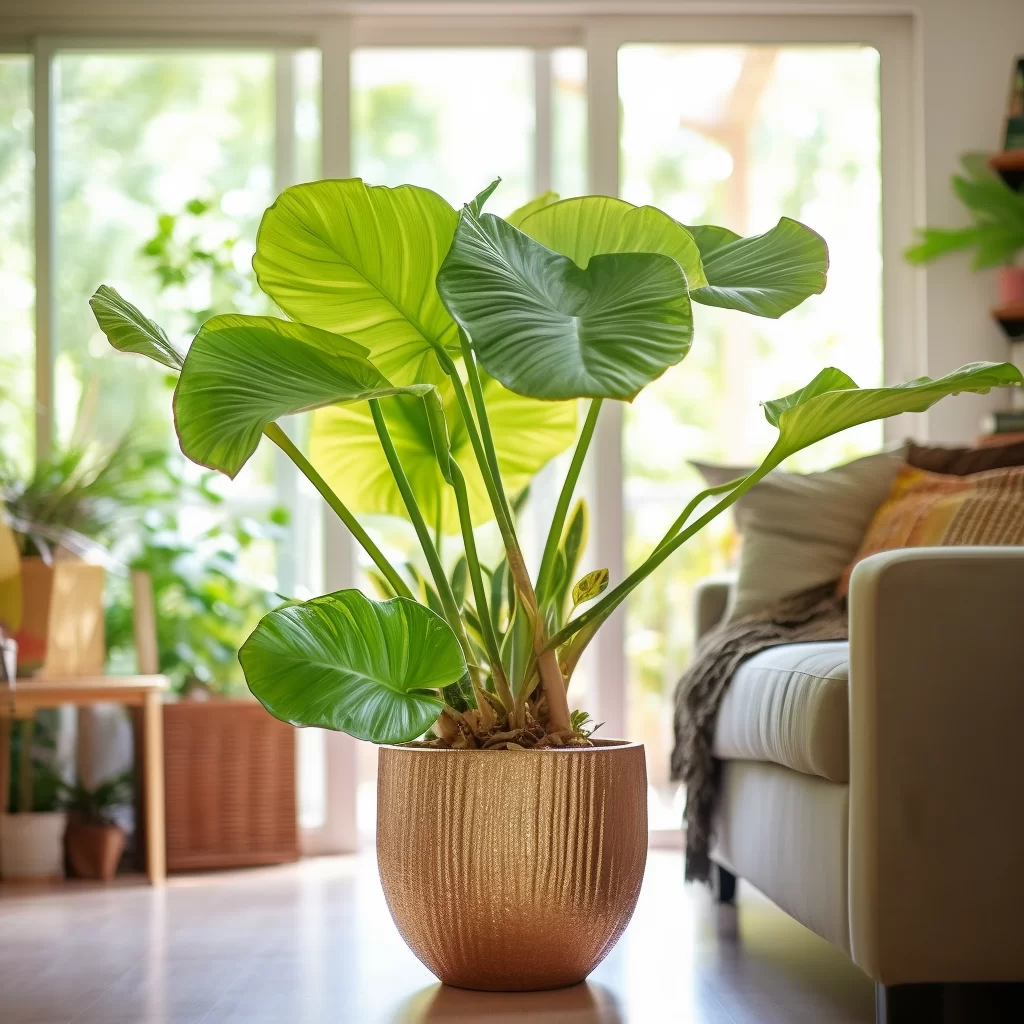Story of Day :
Contents
Indoor Elephant Ear Plant: A Complete Guide and Care Tips
If you want a plant that can instantly make your room feel like a tropical paradise, you should definitely consider getting an indoor elephant ear plant.
With its unique and striking foliage that resembles the shape of an elephant’s ear, it is sure to become the focal point of any space.
Also known by its scientific name Alocasia, these plants are highly coveted for their statement-making ability and can easily transform dull rooms into lush oasis in no time.The indoor elephant ear plant is perfect for people who want to add a touch of nature to their space but don’t have access to outdoor gardens or yards.
These plants thrive indoors and require very little maintenance making them ideal for busy individuals who don’t have much time on their hands but still want to enjoy the beauty of greenery.
So why not bring home an indoor elephant ear plant today and create your own personal sanctuary right inside your home!
Types of Indoor Elephant Ear Plants
If you’re looking for an impressive and statement-making plant for your indoor space, elephant ear plants are a fantastic choice.
There are many varieties of these plants to choose from, each with its unique characteristics and features.
Whether you prefer large or small leaves, deep green or variegated foliage, or a particular growth pattern, there is sure to be an elephant ear plant that fits the bill. Some popular varieties of indoor elephant ear plants include the Alocasia Polly with its glossy green leaves and white veins, the Colocasia Black Magic with its dramatic dark purple-black foliage that contrasts beautifully against lighter decor elements in your home, and the Xanthosoma Albo Marginata which boasts vibrant green leaves edged in cream.
Some popular varieties of indoor elephant ear plants include the Alocasia Polly with its glossy green leaves and white veins, the Colocasia Black Magic with its dramatic dark purple-black foliage that contrasts beautifully against lighter decor elements in your home, and the Xanthosoma Albo Marginata which boasts vibrant green leaves edged in cream.
With so many options to choose from, it’s easy to find an indoor elephant ear plant that suits your taste preferences and works well with the existing decor in your home.
- Alocasia Polly: With its glossy green leaves and interesting shape, this variety is perfect for beginners.
- Alocasia Amazonica: This variety has dark green leaves with prominent white veins that contrast beautifully against the black stems.
- Alocasia Frydek: The Frydek has velvety emerald-green leaves with prominent white veins and edges that curl under slightly.
Care Tips for Indoor Elephant Ear Plants
If you’re lucky enough to have an indoor elephant ear plant, you’ll want to make sure it stays healthy and vibrant.
It’s essential to give it the right amount of water, light, and nutrients.
One mistake many people make is overwatering their elephant ear plant.
This can lead to root rot and other issues.
Instead, water your plant when the top inch of soil feels dry to the touch. In terms of light requirements, elephant ear plants thrive in bright but indirect sunlight.
In terms of light requirements, elephant ear plants thrive in bright but indirect sunlight.
You’ll need to experiment a bit with finding just the right spot for your particular plant – some may prefer more shade while others might require a bit more sun exposure.
Finally, consider fertilizing your indoor elephant ear plant every few weeks during its growing season (spring through summer).
This will provide it with the extra nutrients it needs to truly thrive!
- Lots of light but not direct sunlight: These plants love bright but indirect light.
Direct sunlight can scorch their leaves.
- Frequent watering during growing season: Keep the soil moist during the growing season (spring-summer) but do not let it get waterlogged.
Reduce watering in winter when growth slows down.
- Humidity is key: The ideal humidity level is between 60-80%.
You can increase humidity by placing a tray filled with water near your plant or using a humidifier in the room where it’s located.
Alternatively, misting your plant regularly works too!
- Fertilize occasionally: During the growing period, feed your plant once a month with a balanced liquid fertilizer.
Reduce or stop feeding during winter months when growth slows down.
- Keep away from drafts: Alocasias are sensitive to temperature changes, so avoid placing your plant near doors or windows that open frequently.
Potting and Repotting Indoor Elephant Ear Plants
If you’re looking to cultivate an indoor Alocasia plant, it’s important to keep in mind that they prefer soil that drains well.
This is because these plants are native to tropical rainforest environments and don’t do well with over-watering or stagnant water.
It’s also recommended that you repot your Alocasia plant every two years, which can help ensure healthy growth and development. When it comes time to pot or repot your beloved elephant ear plant, there are a few things to keep in mind.
When it comes time to pot or repot your beloved elephant ear plant, there are a few things to keep in mind.
First off, make sure the potting soil you select is specifically designed for indoor plants and has good drainage properties.
Additionally, be sure not to compact the soil too firmly around the roots as this can limit their ability to absorb nutrients and grow properly.
By following these simple steps, you’ll be on your way to cultivating a beautiful and thriving indoor Alocasia plant!
- Select the right size pot: Choose a pot that is 1-2 inches larger than the previous one to provide enough space for the roots to grow.
- Add soil: Fill the new container with fresh, well-draining soil that is slightly moistened beforehand.
- Gently remove old soil: Carefully remove as much of the old soil as possible without damaging any roots.
- Position it correctly: Situate your indoor elephant ear plant in its new container at a similar depth as before.
Cover its root system completely with fresh soil and press firmly around it to anchor it in place.
Water thoroughly after re-potting to help settle the new roots in their new home! You’re done!
Pests and Diseases That Can Affect Indoor Elephant Ear Plant
Indoor elephant ear plants are susceptible to various pests, with mealybugs, spider mites, and scale insects being the most common culprits.
These tiny creatures can pose a significant threat to the overall health of your plant if left unaddressed.
The good news is that you can easily control these pests using an insecticidal soap spray.
Simply spray every 3-5 days until all signs of infestation have disappeared, and your plant should be able to thrive once again. It’s important to keep a close eye on your indoor elephant ear plants and watch out for any signs of pest infestations.
It’s important to keep a close eye on your indoor elephant ear plants and watch out for any signs of pest infestations.
Mealybugs, spider mites, and scale insects can quickly multiply in numbers if not dealt with promptly.
Using an insecticidal soap spray is a safe and effective way to get rid of these pesky critters without harming your plant or the environment.
With consistent treatment, you should be able to eliminate all traces of these pests from your precious indoor greenery!
If you are a plant lover and you have an indoor elephant ear, it’s important to know that this beautiful plant can be vulnerable to root rot.
Root rot happens when the soil is excessively damp and doesn’t have adequate drainage.
If your elephant ear’s leaves look yellow or mushy, or if there is an unpleasant odor coming from the soil, it may mean that your plant has root rot.
To revive your plant, you can repot it in fresh soil that drains well and reduce watering frequency.Root rot can be a common issue for indoor plants; however, with proper care and attention, you can easily fix the problem.
The cause of root rot in elephant ears is usually excessive watering or poor drainage of the soil they are planted in.
Once you recognize signs such as yellowing leaves or unpleasant smells coming from your potted plant’s soil, ensure that it receives proper treatment by re-potting it with fresh well-draining soil and reducing its water intake.
This will help restore your lovely elephant ear back to health so that it continues to flourish under your care for years to come!
In Conclusion
At first glance, indoor elephant ear plants may look like quite the challenge to take on with their broad leaves and extensive care needs.
However, caring for them is a lot easier than it seems – you just need to give them the right amount of attention.
These plants require plenty of light, humidity and soil that drains well in order to thrive indoors.
If you keep up with these plant care tips, they will stay healthy and vibrant long enough to transform any room into a tropical oasis.Indoor elephant ear plants are not as intimidating as they appear at first glance – don’t be discouraged by their size or maintenance requirements! As long as you provide ample light, humidity and good drainage soil, these beautiful tropical species can flourish indoors without too much trouble.
Keeping up with their needs will ensure that your plant stays healthy and exudes natural beauty in your living space.
Transform any gloomy room into an inviting paradise by following these simple guidelines for taking care of indoor elephant ear plants!